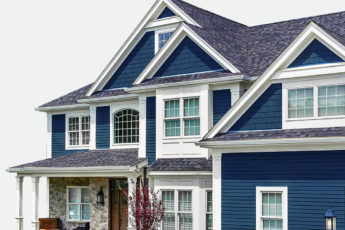Since its inception as a civilian town by the Romans in the first century AD, London has been at the forefront of England’s passage through the ages. Indeed, London’s journey through time has seen it develop from a poorly irrigated Dark Age community into a thriving national capital and even an epicentre of Empire.
One of the greatest things about London is that its long and eventful history can be seen – by those who care to look – in its landscape, streets, monuments, and of course, its buildings. Many of the most significant areas of historical interest within the capital have the status of ‘conservation area’ conferred upon them. This ensures, in theory, that a place of historical interest retains its unique essence and charm.
However, things are stirring in the world of conservation.
English Heritage – the organisation responsible for conferring conservation area status – are worried that widespread plastic (uPVC) sash window replacement in London is spoiling the look of some of the city’s historically important buildings.
So is it wrong to fit uPVC windows in a period property?
Well, let’s look at things from an aesthetic point of view first.
Sash windows are typically installed in frames made out of high-quality, slow-grown softwood timber that was imported – in the 19th Century – from Baltic forests. Most sash windows in London consists of two frames (sashes) with anything between one and half-a-dozen or more panes of glass. These sashes slide within the window case, stabilised by weights attached to cords and hidden within the case of the window.
Replacement sash windows in London made from plastic are very different beasts as they normally open from a pivot and tend to look a little out of place next to older materials.
Of course, aesthetic appeal is not the only aspect which needs to be considered in this day and age.
Everyone from the Government’s Energy Saving Trust to Friends of the Earth supports the use of double-glazed windows as it is believed they can help to prevent heat escaping from buildings, thereby cutting down overall carbon emissions.
English Heritage sees things a little differently. The organisation believes there are a raft of things residents can do to reduce heat loss which are every bit as effective as installing double-glazed windows. These include adding shutters or heavy curtains to windows; fitting secondary glazing on the inside of a window; and, draught-stripping, which essentially involves installing brush strips (or sometimes rubber or silicon) around existing sash frames to achieve a better seal.
Both of these arguments may prove arbitrary anyway as it is of course the law which is likely to have the final say. It is a fact that residents who have sash windows in London Boroughs that maintain so-called ‘article four directions’ must get planning permission before replacing them with plastic windows. Similarly, people living in listed buildings must get listed building consent before they can consider any kind of plastic sash window renovation in London.


